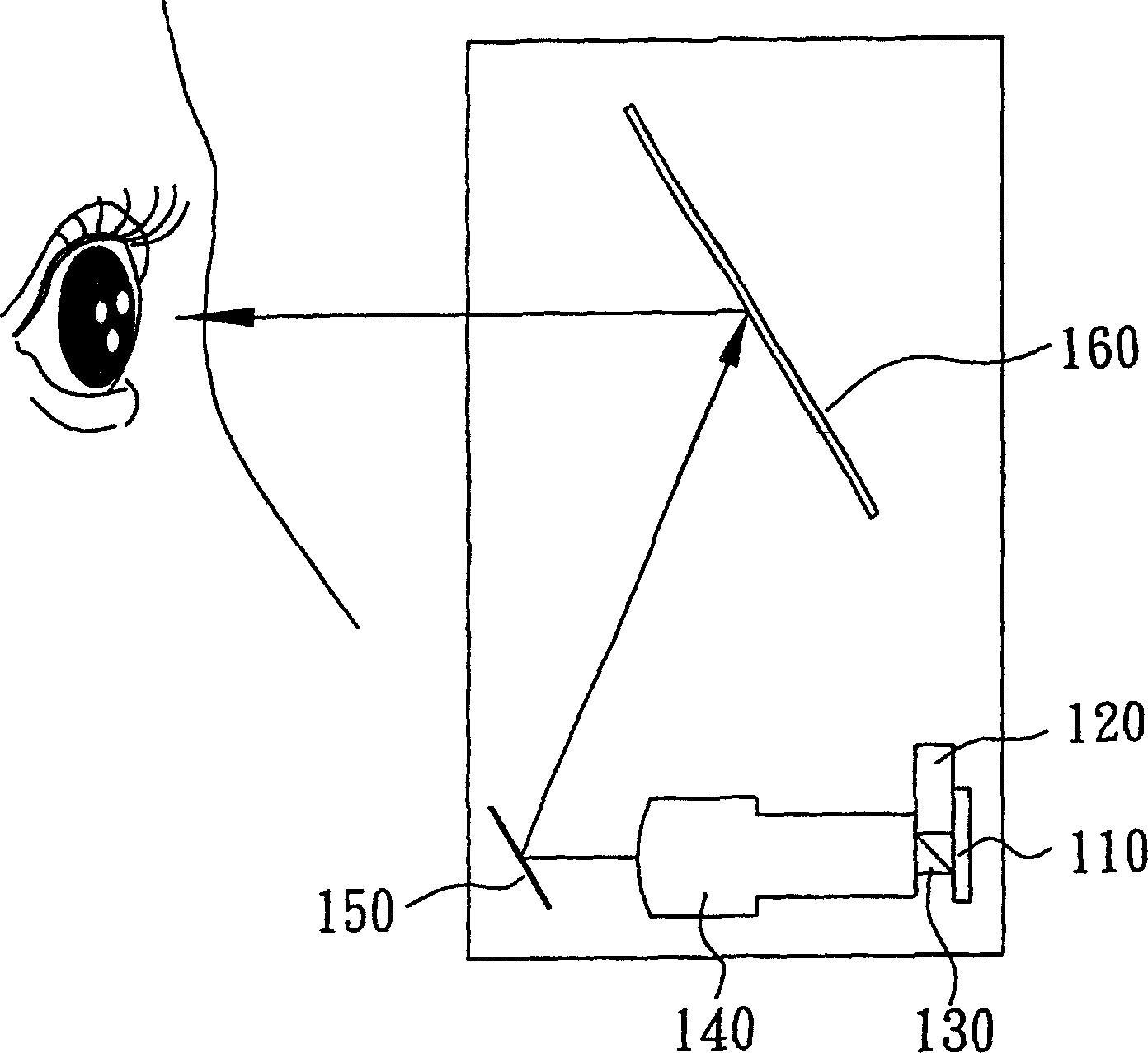Double block refraction imaging display machine
An imaging and refracting mirror technology, applied in optical components, optics, instruments, etc., can solve problems such as discomfort of the human eye, increased projection system space, retinal detachment, etc.
- Summary
- Abstract
- Description
- Claims
- Application Information
AI Technical Summary
Problems solved by technology
Method used
Image
Examples
Embodiment 1
[0051] Please refer to Figure 8 , Figure 8 It is a sectional view of the interior of the glasses-type image display device of the present invention. The present embodiment includes a housing containing two L-COS microdisplays 210 and 211, two light sources 215, two triangular mirrors 220 and 221 (reflecting units), two non-equal curvature convex lenses 230 and 231 (refracting lens groups), And two concave imaging areas 240 and 241 (virtual imaging unit) processed by partial mirror surface. Wherein, the two microdisplays 210 and 211, and the light source 215 are placed in the center of the housing, and the other side of the two microdisplays 210 and 211 are respectively equipped with a prism 220 and a prism 221, so that the two microdisplays 210 and 211 211 is not between the two triangular prisms 220 and 221. Convex lenses 230 and 231 are respectively placed under the triangular prisms 220 and 221 , and virtual image forming areas 240 and 241 are respectively placed under...
Embodiment 2
[0057] The structure of this embodiment is roughly the same as that described in Embodiment 1, except that the virtual image imaging unit 240 is replaced by a flat mirror by a concave mirror. In this way, the formed image is only refracted and magnified by the convex lens 230 once, and then transformed into a virtual image by the plane mirror, which does not have the magnification function. However, the magnification and function of the structural image in this embodiment can still be accomplished by the convex lens 230 that refracts light.
Embodiment 3
[0059]The structure of this embodiment is roughly the same as that described in Embodiment 1, except that the virtual image imaging unit 240 is replaced by a concave lens with a reflectivity of 40% by a concave mirror; its imaging principle and magnification are the same as those described in Embodiment 1. But after replacing it with a concave lens, the observer can see the external environment at the same time when observing the image. And because the device of the present invention forms a virtual image by refraction projection, when a concave lens is used as the virtual image imaging unit, the light rays that transmit the concave lens have a relatively large angle of refraction and deflection. People with glasses-type displays will not see the images and data that the user is using or receiving. It has good confidentiality and privacy, and will not interfere with other people around.
PUM
 Login to View More
Login to View More Abstract
Description
Claims
Application Information
 Login to View More
Login to View More - R&D
- Intellectual Property
- Life Sciences
- Materials
- Tech Scout
- Unparalleled Data Quality
- Higher Quality Content
- 60% Fewer Hallucinations
Browse by: Latest US Patents, China's latest patents, Technical Efficacy Thesaurus, Application Domain, Technology Topic, Popular Technical Reports.
© 2025 PatSnap. All rights reserved.Legal|Privacy policy|Modern Slavery Act Transparency Statement|Sitemap|About US| Contact US: help@patsnap.com



